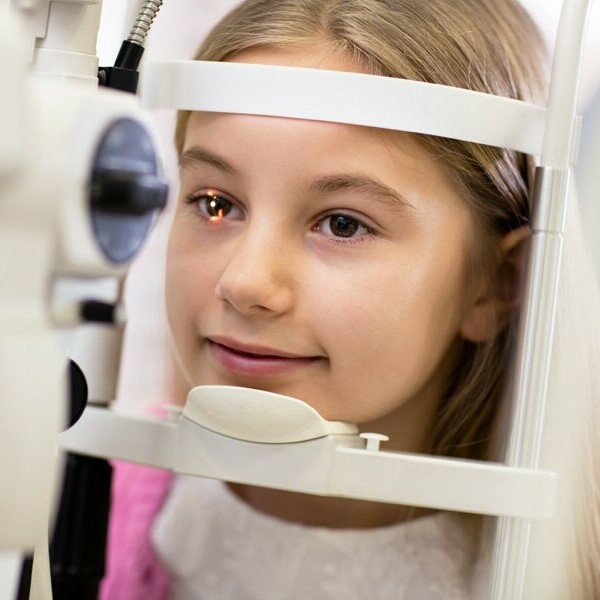Stories With VisionTwinkle of an Eye: Looking after Your Children’s’ Vision
Posted on: Jul 12, 2016Many people think that vision problems only happen past a certain age, but even under normal circumstances, a child’s vision can change more frequently than the average adult.

As part of the Royal Alexandra Hospital Foundation's $4 million campaign for the Eye Institute of Alberta, we are pleased to present a series of articles on eye care featuring some of the Royal Alex's leading eye care specialists.
It’s no secret that as we age, our vision starts to deteriorate, but what about children’s vision? Many people think that vision problems only happen past a certain age, but even under normal circumstances, a child’s vision can change more frequently than the average adult. Although serious eye conditions are rare in children, they are not uncommon, and care should be taken to ensure children’s eyes are as healthy as possible.
Dr. Carlos Solarte is an Associate Clinical Professor in the Department of Ophthalmology at the University of Alberta and specialist in Pediatric Ophthalmology. He is a firm believer that all children should have an eye exam before the age of five.
“Pre-school age is definitely the best time to treat any serious eye problems,” stresses Dr. Solarte. “The younger the child is, the more success we will have with treatment. If something serious is only detected when a child is a teenager, then options become limited.”
“More than 90% of eye conditions are preventable and treatable,” says Dr. Solarte. “As with many medical conditions, early detection and treatment is the key.”
Common eye conditions in children include:
Amblyopia: Sometimes called lazy eye, amblyopia results in poor vision in an eye that appears normal. If untreated during childhood, amblyopia can lead to permanent vision loss or impairment in the affected eye.
Strabismus: A misalignment of the eyes, commonly known as cross-eyed, which causes eyes to wander. Healthy vision can be restored by patching the properly aligned eye and forcing the misaligned one to work harder. Surgery or specially designed glasses may also help correct strabismus, usually used at the same time as patching.
Warning signs that your child may have a vision problem include sitting too close to the TV, or having to hold books very close to read them. Sometimes younger children may bump into things, or seem to have trouble grasping objects or judging distance. At school, teachers may notice when a child is squinting to see the blackboard, or seems a bit clumsy with sports and activities.
“These are all signs that a child might have vision problems,” says Dr. Solarte. “And for younger children – four or five years old – often they can’t really comprehend a vision problem, or be able to express that something is wrong. They learn to cope, or they think that their compromised vision is normal, which is why early diagnosis and quick treatment is so important.”
Myopia – the inability to see objects at a distance – is one of the most common eye disorders in the world and often appears in children. In Canada, myopia affects about 30 per cent of the population, according to the Canadian Association of Optometrists.
People usually first notice myopia in their teenage years, when it becomes apparent that other people can see distant objects better than they do. This may come as a shock to a young person since myopia develops gradually. Such a teenager may be amazed at the clarity of the world after they get their first pair of glasses.
“If a child has a truly serious vision problem, they will welcome glasses and never take them off,” says Dr. Solarte.

Dr. Carlos Solarte
Fortunately, not many serious eye conditions are hereditary. If there is a serious vision problem in a family history, parents will know about it and be able to seek early treatment for their children who might carry the problem.
“Although conditions like glaucoma or cataracts are usually quite rare in children, we do see young patients in significant numbers,” says Dr. Solarte. “For instance, I will treat children with glaucoma about two or three times a year, but I treat children with congenital cataracts about twice a month.”
Identifying and correcting vision issues as early as possible can impact a child now and throughout his or her life. In most cases, corrective glasses or simple procedures can easily cure vision problems in children. Proper diagnosis and treatment of childhood vision problems will help your child have healthy eyes and good vision for years to come.
The Eye Institute of Alberta provides expert eye care for children, adults, and seniors. Designed to treat 12,000 patients a year, the Eye Institute of Alberta now provides care for more than 45,000 patients each year. This volume means challenges for both patients and staff. To ensure the very best patient experience at the Royal Alex, the Eye Institute of Alberta requires significant renovations. The Royal Alexandra Hospital Foundation is dedicated to raising $4 million to help the Eye Institute of Alberta to continue providing the very best in vision and eye care.
Learn More and Support the Eye Institute of Alberta
